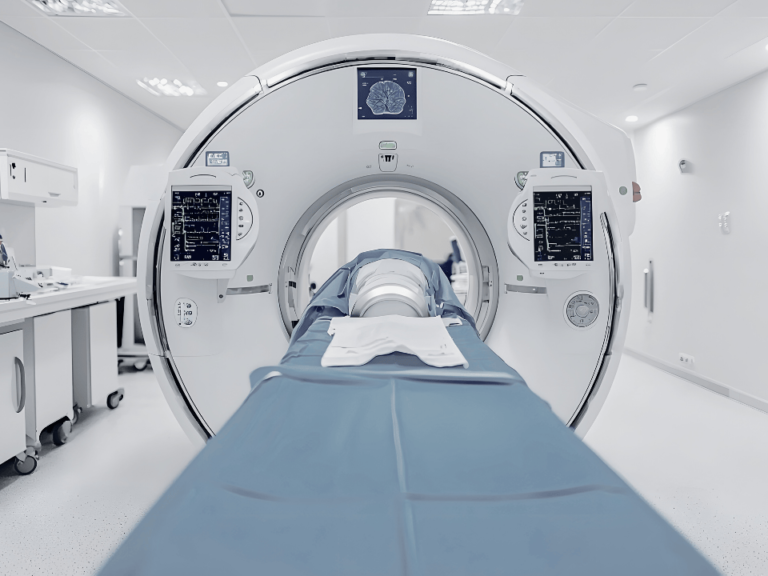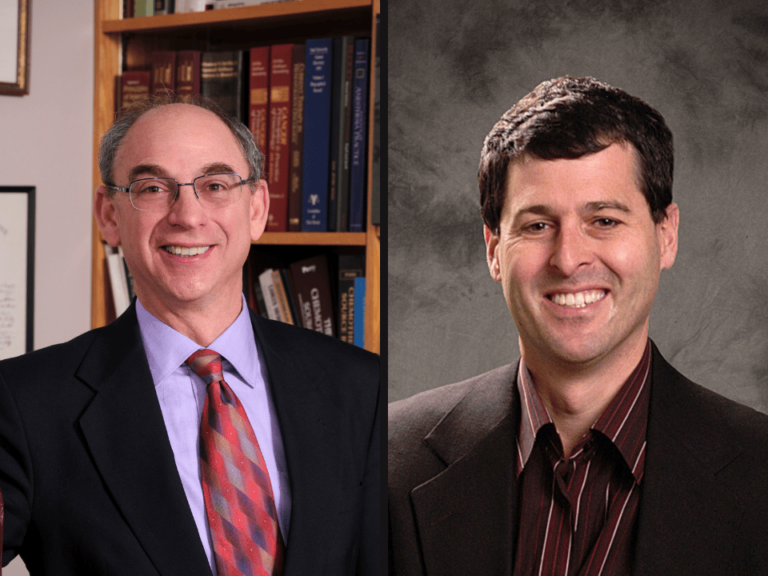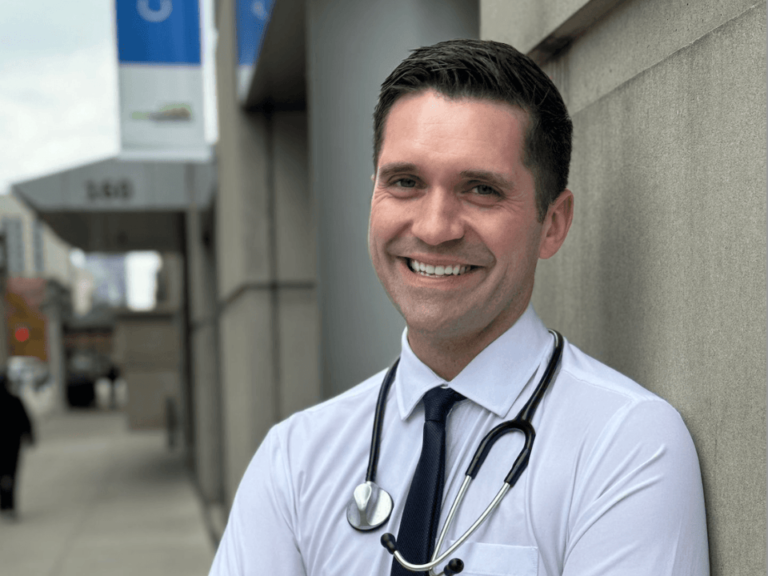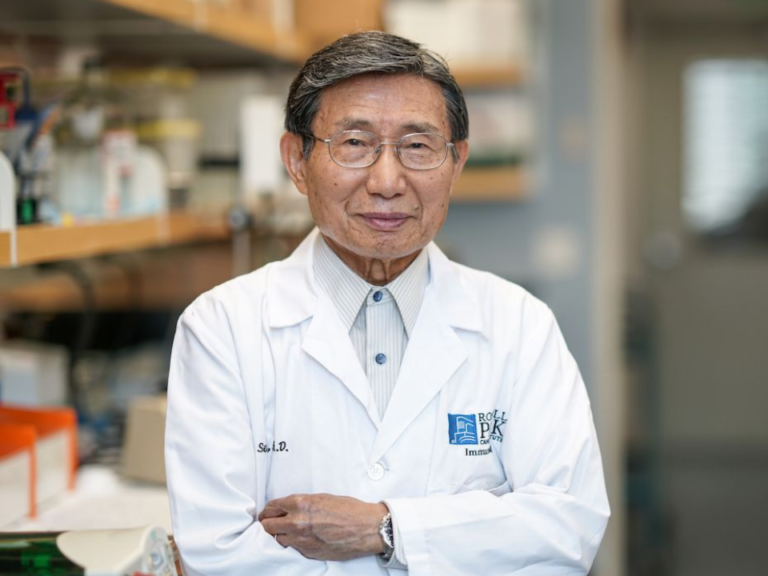A transcript of Biden’s speech at the National Cancer Moonshot Summit at Howard University June 29 follows:
What changes do we have to make, if any, in this fight?
All across the country, all under a national charge from the White House to do something big but very possible: Make a decade’s worth of progress in the next five years.
When the moonshot was first announced, some said, “Well, Biden’s being naïve, ending cancer in our time…” Well, that’s not what I said.
I believe we can make exponential progress. I firmly believe we can do in the next five years what would ordinarily take ten. And think of what that will mean, of how many people you know who are saying, you docs are saying, “Doc, I just want to make it one more month to see my daughter get married.”
“Doc, doc if I can just make it another four months, I’ll be able to pay off the house and my wife will be okay when I go.”
“Doc, all I want to do is see my daughter graduate.”
These are real, real, real, real life situations: time matters. Days matter. Minutes matter. You all know that. We know the problem. Right now, there are 14 million new cases a year in the world, 8.2 million cancer related deaths worldwide per year.
The projections are, by 2025 if we stay on the exact course we’re on now, making the progress we’re making now, there will be 20 million new cases a year, and 11.4 million deaths from cancer alone.
Again, this is preaching to the choir, but unlike other diseases, you all know there are over 200 distinct types of cancer that we’ve identified, which makes cancer far more complicated disease, to treat and understand.
Cancer is taking loved ones from us and robbing us of decades of their lives. When I announced the decision to not run for president, by the way, I learned, if you want to become a really popular elected official, announce that you’re not running for president. It’s amazing what’s happened.
If I’d known this, I would’ve announced every year I wasn’t running.
But after Beau passed, Jill and I concluded we couldn’t. Anyway, I said in the announcement, because I was expected to make a formal announcement one way or another, I said that—it wasn’t written on the page, it was spontaneous—I said that my regret was that if I could do anything I would’ve wanted to be the president who ended cancer as we know it, because I think it’s possible.
My mom had the expression, “A little bit of knowledge is a dangerous thing.”
Any time your loved one, someone you care about, someone who’s part of your soul, part of who you are is in trouble, all of you do the same exact thing: you try to learn as much about the thing causing that person the trouble. You try to learn as much as you can.
I had some great tutors; great hospitals we were in: MD Anderson, Jefferson, Walter Reed—I mean I had great tutors.
That cancer moonshot grew out of a sentiment that I acquired, that we’re on the cusp of an awful lot of change.
Shortly after, at the State of the Union, the president didn’t even tell me, but he announced at the State of the Union that Biden’s doing a moonshot. When I first heard it, I thought he wanted me to get in a capsule and head to the moon, but he’s one of my best friends.
He asked me to lead this sector. But he didn’t just ask me to lead it, he gave me authority, like he did in the Recovery Act, authority over all the cabinet positions, as if he were doing it, to engage the entire federal government, every cabinet agency that has any impact possible impact on the fight against cancer, from outfits like the NIH which you immediately associate with to Department of Energy.
I’ve traveled the country and the world, touching many of the major nerve centers in the fight against cancer to get the ideas of the experts. Is it possible, can we double the rate at which we make progress?
By the way, regardless of where I am, I do an awful lot of foreign policy. I’m referred to as a foreign policy expert. You know that old joke: an expert is someone from out of town with a briefcase.
I did not bring my briefcase. I know a hell of a lot more about foreign policy than I do or did, particularly at the beginning about the fight against cancer.
I was recently in the Middle East, talking about ISIS, and, in the Gulf, with one of the leaders, and I thought we were going to have this long discussion.
I brought my entire foreign policy team, my national security advisors; he had his whole team sitting on this beautiful dock outside at one of these palaces.
And he starts off and says, “Can you talk about cancer?”
When I was in Jordan, when I was in Israel, Japan, South Korea, working on [memoranda of understanding] at each one of those countries, they all said that they want to be part of this effort.
I’ve been stunned, stunned, stunned at the response to the president’s announcement. Just evidence, nothing about me or the president. It’s about the intensity with which people feel about this subject, and the overwhelming desire to have some concrete hope of distant changes.
Whenever I go, when I talk about what’s possible with fighting cancer, there’s a consensus that we’ve reached an inflection point.
Let me explain what I mean by that:
Five, six years ago, oncologists weren’t routinely working with immunologists, virologists, chemical engineers, biological engineers—but now, they are.
Secondly, there is a recognition that by aggregating and sharing data of millions of patients, including genomics, family history, lifestyle, treatment outcomes.
We have the potential to find new patterns and causes and successfully treat cancer in ways we never did before. We can now do a thousand billion calculations per second.
It changes the world, potentially. [Through] aggregating data we can learn. Now we have the capability to do with advanced technology and super computers. Supercomputing allows us to analyze enormous amounts of data to o find answers we couldn’t do five years ago. It would take scores and scores and scores of experts years to pour over them and find similar patterns.
And there’s new hope, new treatments like immunotherapy training the immune system to attack cancer cells more accurate radiation therapies that target cancer cells but do less damage to the healthy cells.
Transforming many of the types of cancer into chronic and manageable diseases, when ten years ago they were literally a death sentence. But in my view, to seize the moment, to seize this inflection point, we have to improve how we work together and get this all within our reach.
One of the biggest problems we have in my view to solve is treatments need to be affordable.
We need a strong continuum for generating, using knowledge to fight cancer and we have to change the entire path in my view of how knowledge goes to small labs to pharmaceutical companies to production facilities.
And the cost of lifesaving drugs is astronomical. We have to come up with a better way. What is the possible justification when a drug a lifesaving drug is brought to market at the time it’s brought to market it costs $26,000 a year, and 15 years later it costs $120,000? Tell me, tell me—tell me, what is the justification for that?
I’m sure you can identify a lot of other examples, and I know there are hundreds of millions of millions of dollars in sunken costs that come up with nothing.
They have to be accounted for, but I want to raise some questions here and I want to get some answers. When I began the moonshot effort, I was committed to bringing together all of the human financial and knowledge resources we have to break down silos to seize the moment and to double our rate of progress, but I’m also committed to doing everything in my power to change the culture that too often stifles that progress.
Quite frankly, we have to change the culture a little bit. There was a report in Stat News that although NIH funding for cancer trials requires the funding. When you get the funding, NIH requires the results of that data being reported instantly. Yet, a number of institutions that receive the most funding from NIH don’t report back to NIH in a timely fashion–sometimes a year or more.
NIH scientists themselves, 75 percent of the time were late or don’t report their results.
That’s the study. It may be wrong. And I hope the experts here will tell me that’s incorrect, but under the law it says you must report. If you don’t report, the law says you shouldn’t get any funding.
Doc, I’m going to find out if that’s true, and if that’s true I’m going to cut funding. That’s a promise. That’s a promise, because all that does is slow progress.
To change the culture, the moonshot effort has got to take part in a few missions. We have to reclaim the incentive for research within the research system, promote breakthroughs and faster progress in preventing and treating cancer.
We have to change the culture of research that turns scientists into grant writers, discouraging risk-taking. We have to change your academic and publication system, to reward teamwork and results for patients, not just raw numbers of publications and awards that are granted.
And by the way, I said this to 6,000 researchers, hosted by an organization in one of the other cities. Notice the heads of the organization were a little bit dismayed when two thirds of the audience stood up and clapped. Not a joke: we need to be sure that research studies are available as soon as they are published so the field can move forward.
We have to generate, and share, and integrate data with the ultimate goal of enhancing patient care.
We have to create better systems to share data and to empower patients to share and use their data in a way they want to.
In other sectors like physics and aerospace, scientists share complex information seamlessly and ubiquitously all the time, but somehow, I guess because of hundreds of years of tradition, not in medicine.
Maybe there’s an explanation; I haven’t heard it yet.
We have to bring new prevention strategies and diagnostics and therapeutics to patient communities around the world.
The first place I’m going after this summit is to Cleveland, to highlight a tobacco cessation and cancer screening program, and a collaboration between George Washington University and Case Comprehensive Cancer Center at Case Western Reserve University.
Both Washington and Cleveland have higher-than-national-average smoking rates—lung cancer rates are higher, especially in areas where few people have access to cancer screening.
This problem, which you’ll hear more about this morning, uses social media and digital monitoring technologies to help people adapt to healthier lifestyles.
You all know the numbers better than I do. Prevention can save a whole hell of a lot more lives than anything else we can do. Other screening programs are becoming available that detect cancer early so that it can be treated with a better chance of success.
These new approaches include non-invasive and mobile imaging techniques, new genetic markers that allow us to identify those at risk of developing cancers long before they develop.
I’ve been to most every major cancer institution in the country. Some of the work you’re doing is absolutely mind blowing. Liquid biopsies are getting a whole lot of attention, and may provide an even better way to screen for cancer very early in the process with a simple blood test.
We can reach more people by taking screening into their communities, just like we did I might add with breast cancer and HIV. We have mobile vans rolling in all of those communities. We have mobile vans rolling in every one of your cities.
As these techniques become more and more available and more precise, there’s a lot we can do.
Finally, we have to accelerate getting treatments to patients by identifying any unnecessary regulatory barriers that exist on the federal level that stand in the way of improving research or care.
For example, patients should be able to seamlessly find a clinical trial that might suit a specific condition. Doctors should have an easy way of guiding their patients through the process.
But as you know, less than 4 percent of cancer patients are enrolled in trials that might be key to discovering the next lifesaving treatment.
I’ve been to Washington State, I’ve been to Nevada, I’ve been to California, I’ve been in Florida, I’ve been to I think 11 of the most highly-funded and most reputable cancer research centers in the world. And they talk about how can they will they be able to get this lifesaving capacity out to rural communities, Indian reservations.
The one thing about you docs is, you became docs for a reason, you’re devoted, you care, you care a heck of a lot.
It surprised me and pleased me to see how intensely the medical community was talking about the need to get services to at-risk communities that weren’t available right now.
Online clinical trial database has proven to be far too complicated for most patients and most local oncologists to be able to navigate. So under the moonshot we’re creating a new trials.cancer.gov to help people learn about and get access to cancer trials.
It will also be, I hope, a significant benefit to the pharmaceutical companies who are conducting trials and many times have trouble finding enough people to be in the trials.
As advanced as we are, the idea that we can’t come up with an app that is accurately able to be used and has all this data on it is surprising to me. When we put in the Recovery Act, the president asked me to manage almost a trillion dollars: $840 billion. We spent 18 months, and, by the way, from every outside study, with less than 0.2 percent in outside waste or fraud.
And in that, we thought we were going to change the way we governed, and we decided that electronic recordkeeping would help the medical community a great deal.
So we put $35 billion in. It all got spent.
Guess what? The five different systems can’t talk to one another, I mean think about it. Now we’re not computer scientists.
My son Beau, he was in a trial of one—anti-PD1 and a viral injected into his stage IV glioblastoma—requiring him, on a multiple times in a day, to do an MRI to see the progress.
At first, our docs were giddy at the progress being made. But he was up at Walter Reed, and the docs were down at MD Anderson, an incredible organization in my view.
But for the fact my son-in-law is a leading surgeon in the Philadelphia area, we had to gather up the information not recorded electronically, get on a plane, and fly it down.
Joe could you imagine your company functioning that way and being able to make it? It’s not anybody’s fault, but we’ve got to fix it. We’ve got to fix it.
We owe it future generations to seize this moment, to move with deliberate purpose and double our rate of progress and just deal with the things that if this were a high tech firm we were running, they’d say we’ve got to solve this problem. It’s within our wheelhouse to do these things.
What I’m talking about doesn’t even contemplate the enormous genius that is in this room.
One of the brightest men in all of medicine is sitting right there—the head of NIH. I mean it sincerely. The impediment isn’t the lack of the gray matter genius and ingenuity in terms of new drugs, new treatments, etc. It’s all this stuff that gets in the way.
The only thing I’m good at in government is getting things out of the way. I don’t want this to come across as somehow the federal government has the answer. We don’t have the answers. We’ve got to figure out how to get out of your way and you guys have to figure out how to get in each other’s way more.
Previous generations successfully faced similar problems in giving us longer lives to enjoy today, and millions of people feared that their children during the Polio epidemic of the 50s, but hope conquered fear sooner than anyone had ever imagined with technology and breakthroughs with the polio vaccine.
Look what you’ve all done in HIV/AIDS, and how you’ve aggregated the capability and the progress.
Cancer is not going to be conquered by any one thing, but I believe it’s a challenge with your brilliance we can win if you’re devoted to winning it in a timely fashion, meaning yesterday.
Today, we’re announcing a series of measures being implemented by private agencies, companies, universities, institutions, and foundations that address some of the problems and move us toward a goal of doubling that rate of progress.
The federal task force has gotten to work, and today is announcing a dozen new actions of policies including the Department of Energy and Veteran’s Affairs have now formed a collaboration to form the most powerful computational assets at the national labs to nearly half a million veterans records in one of the world’s largest research cohorts.
The Million Veterans Program, a cornerstone of the president’s precision medicine initiative.
The National Institute of Health is launching a new partnership bringing together twelve biopharmaceutical foundations and philanthropies to invest together to fund research to make all the resulting data available to everyone, ultimately bringing new therapies to patients in less time.
Earlier this month, I went to the University of Chicago for the launch of the National Cancer Institute Genomic Data Commons, a platform that includes genomic data, associated clinical trials that are shared openly and broadly to advance cancer research and improvement.
We’re announcing today that with commitment from Foundation Medicine, a total number of patients has gone from 32,000 patients have accumulated, doubled the 32,000 in just over a month.
The expectation and hope is that it’ll be exponential. Private, philanthropic, academic, patient advocacy communities have answered the call including the Breast Cancer Research Foundation, inspired by the moonshot I’m told, called for collaboration and commitment is doubling their annual research investment from $50 million to $100 million, aiming for an accumulative investment of $1 billion by 2021 to speed up connecting the dots, as they say.
Between molecular information we can amass and our understanding of cancer to accelerate turning new discoveries into effective treatments. OPeN, the Oncology Precision Network, a partnership between Intermountain Healthcare, Stanford Cancer Institute, Providence Health Services, Catholic Health Initiative, the Henry Ford Health System and Syapse.
This network is going to link cancer genomic data for 79 hospitals and 800 clinics across 11 states, data for more than 50,000 more cancer patients per year that can now be shared openly on a network.
A company called DocGraph will use Medicare claims data released because of the use of the administration’s open data effort to publish reports describing Medicare patients, how they move through the healthcare system, in years before and immediately after a cancer diagnosis.
The report will show how factors such as geography, type of physicians, and providers they see, their treatment, their pathways, effect the patients experience and effect the outcomes.
Through a collaboration between Destination Brands International and Mt. Sinai Medical Center, the City of Miami Beach providing dozens of free sunscreen dispensers on their beaches, their parks, their public pools for residents, for millions of visitors every year. I might add parenthetically, there’s been no progress in sunscreen, in new sunscreen applications; I don’t know this for a fact, for almost two decades.
That’s a long time.
In response to Cancer Moonshot, the focus on prevention Miami beach is going to continue this program at least until 2021. These are just some examples.
There are 30 other announcements we’re making today. In the early 1900s, a bone surgeon in New York named William Cooley following pioneers like Koch and Pasteur and von Behring developed a theory that most surgical infections, post-surgical infections, helped patients recover better from cancer by provoking the immune system response.
He began injecting patients with Streptococcus and dead bacteria, which became known as Cooley’s toxins.
When he did, the patients survived a little bit longer. Following pioneers like Cooley, scientists developed immunotherapies that have the chance of making some cancers a distant memory.
Imagine a day, perhaps when my grandchildren have children of their own, when the threat of cancer is a distant memory, when their children can be vaccinated for cancers as routinely as being vaccinated for measles and mumps. And other cancers can be treated and cured, made into chronic conditions.
Folks, I’ve spend the better part of the last year trying to learn as much as I possibly can to become as informed as I possibly can, and yet I’m not as informed as many of you in the audience.
I can tell you more about the SS-18 Soviet silo missile than I can about some cancers, but I’ve worked hard, I’ve gotten a lot of help. I think I’m in a position to say without being totally naïve that we’ve on the cusp of breakthroughs that can get us there.
The goal of the moonshot is to propel us forward today. Supporters and skeptics alike ask us, “What’s the moonshot?”
Moonshot is all of you, people listening in these all around the country.
All of you jumping in and doing what you can to help prevent, change lifestyles, detect, treat cancer. It’s everyone who is spending nights and weekends in their labs looking for the next breakthrough, it’s the patients who are being treated for their cancers hoping they can return to their lives and their families.
It’s patients starting foundations and companies to develop cures for their children. It’s organizations like the NIH and the Department of Energy, and as small as Alex’s Lemonade Stand trying to understand cancer and help patients defeat it.
The Moonshot is carrying the hopes and dreams of millions of people who want us to succeed, make a difference in their lives and their families. Not someday, but now.
The work we’re doing and the work we’re doing together I think we’ve fulfilled many of those hopes. Cancer touches everyone in some way. We all have reasons for being here. Survivors, patients, families, friends, physicians, researchers.
Almost every one of us in here has lost someone relatively close to us.
We’re all here because we can do something about it. And that’s what Jill and I had decided to do when our so Beau passed.
Part of the moonshot is my view from my perspective internally of Beau, and the life he lived of courage, and never giving up hope. This isn’t about him, this isn’t about a single person, it’s about us not giving up hope and having the urgency of now.
I won’t mention the particular agency, but we’ve had, one of the agencies in the federal government said they’re going to get a new director, and said “We’ll have it by the end of 2016.”
I called the head of that department in and said, “[End of] 2016? It is now June. If you can’t get that director in the next four months, tell me, we’ll go find someone else who can find them.”
It’s bizarre.
Some of your actions are like that: we can do it later.
Because these are breakthroughs that are just beyond our grasp. We need each and every one of you, I challenge all of you, to think anew about the scourge of cancer.
Go beyond your comfort zone. Set and achieve goals that are going to change the way we do this. Think about it tomorrow.
Look, I’ll conclude by saying that I know I’m maybe I’m sometimes accused, with total justification, of being too passionate about the things I care a lot about.
When we were doing the Recovery Act and I was in charge of making sure we are spending money wisely, I met with the cabinet sixteen times, I met on the telephone for at least an hour with every single solitary governor but one, almost every mayor in the country, almost every county executive.
There was one program we had, I won’t mention it, we weren’t able to get out x percentage of money, about $28 billion dollars, that would have an incredibly positive impact on energy and on the consumption of energy.
So I turned to one of the head of the departments, a brilliant guy, and asked why it hadn’t been approved yet.
This person said, “I have a 30-person department that has to go through it.”
I said okay, I turned to the other department that was involved and I said, “Why hasn’t this been done?” He said, “I have a 28-person department.”
I looked to my watch, and I said, “it is now 11 after 10,” and at the time it was a Tuesday. “If you guys don’t have this settled by 11 after 10 on Thursday, I promise you I’m stripping those departments.”
Son of a gun, it was done and well.
Guys, some things you cannot rush. They take time. But some things, the only reason they’re not happening is not we don’t know how to do it.
We’re not urgently focusing on what has to be done.
Finding a director, if we lost a director, God forbid we lost a CIA director, I promise we’d have one very shortly. If we lost a general on the battlefield, I promise we’d have one very shortly.
So my plea with you is, and I know most of you are working 17 to 18 hours a day:
Help me today be able to go back to the president, to tell me what I should be doing, what we should be doing to increase the collaboration, expand the base of knowledge, and have a greater sense of urgency on the mechanical things, on the structural changes that make a difference.
You’re extremely gracious to put up with me, we need you badly, and I really do believe it’s within your power to fundamentally change and turn despair into hope a lot sooner than later.










